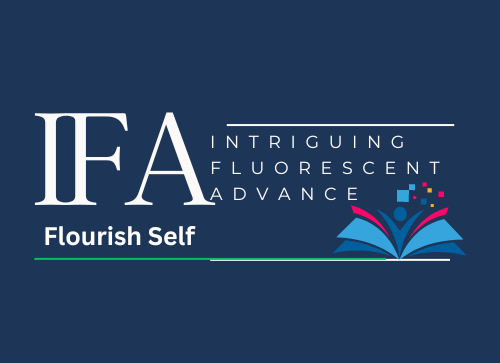
Learning Styles Effectively: Utilizing for Academic Success
Understanding the unique learning styles of students is crucial for creating an inclusive and effective educational environment. By tailoring teaching methods to individual preferences, educators can maximize comprehension and engagement, promoting personalized learning experiences.
Identifying student learning styles involves observing how individuals absorb and process information. It can be done through various methods, such as using learning style inventories or assessments. These tools help educators gain insights into students’ preferred ways of learning, allowing them to provide targeted support and instruction.
Key Takeaways:
- Recognizing and understanding diverse learning styles enhances teaching effectiveness.
- Identifying learning styles can be done through assessments or inventories.
- Personalized learning experiences promote individual student growth and engagement.
- Tailoring teaching methods to diverse learning styles fosters an inclusive classroom environment.
- Observing student preferences for visual, auditory, or kinesthetic activities helps identify their primary learning style.
What is a Learning Style?
A learning style refers to a student’s preferred method of comprehending new information. It encompasses a range of sensory preferences, including sight, touch, sound, taste, and smell. Each student possesses a unique learning style that influences how they absorb and process information. Recognizing these individual preferences allows educators to tailor teaching methods to ensure effective learning.
Understanding a student’s learning style involves identifying their dominant sensory channels and the ways they process information. Some students may be visual learners, relying on visual aids such as images, diagrams, and charts to grasp concepts more easily. Others may be auditory learners, benefiting from listening to lectures, discussions, and audio recordings. Some students may have a preference for hands-on experiences, indicating that they are kinesthetic learners who thrive in a more interactive and physical learning environment.
By acknowledging and accommodating diverse learning styles, educators can create a more inclusive and engaging classroom. Adapting instructional approaches to align with students’ learning preferences enhances their comprehension and retention of information. Additionally, personalized learning experiences tailored to individual learning styles promote a sense of ownership and empowerment among students, fostering their overall academic success.
Recognizing the significance of learning styles in education, various learning style inventories and assessments have been developed. These tools help educators identify students’ learning preferences and provide insights into their cognitive strengths and weaknesses. Armed with this knowledge, teachers can design instructional strategies that cater to students’ individual needs, promoting effective learning outcomes.
“Every student has a unique learning style that shapes their journey through education. By understanding and accommodating these preferences, educators can create a more personalized and impactful learning experience.”
Personalized Learning and Student Success
Personalized learning, based on an understanding of students’ learning styles, can significantly impact their academic success. When instruction is tailored to align with students’ preferences, it enhances their engagement, motivation, and comprehension.
A study conducted by Dunn and Dunn revealed that when instruction matched students’ learning style preferences, academic performance improved by 20-30%. Moreover, personalized learning experiences promote positive attitudes towards learning and increase students’ self-confidence.
Integrating various teaching strategies that cater to different learning styles also allows students to discover and develop their strengths. This approach cultivates a positive learning environment that celebrates the uniqueness of each student and encourages collaboration and peer support.
Types of Learning Styles Effectively
Understanding the different types of learning styles is crucial for educators to effectively support their students and provide differentiated instruction. Learning styles are influenced by cognitive, emotional, contextual, and prior experience factors, and recognizing them allows teachers to tailor their lessons to cater to individual preferences and enhance learning outcomes.
Visual Learners
Visual learners prefer learning through visual aids such as images, diagrams, and charts. They have a strong ability to absorb and retain information when it is presented visually. Seeing information in a graphical form helps them process complex concepts and relationships more easily, leading to improved comprehension and retention.
Auditory Learners
Auditory learners excel in absorbing information through sound. They learn best through listening and participating in discussions, lectures, and oral explanations. These students often benefit from reading aloud and using mnemonic devices to remember information. By engaging their sense of hearing, educators can effectively communicate concepts and engage auditory learners in the learning process.
Kinesthetic Learners
Kinesthetic learners thrive in hands-on experiences and physical interactions. They have a preference for learning through movement, touch, and manipulation. These students benefit from activities that involve practical applications, experiments, role-playing, and interactive exercises. By integrating kinesthetic learning methods into their lessons, teachers can create a dynamic and engaging learning environment for these students.
By acknowledging the diversity of learning styles in the classroom and adapting instructional strategies accordingly, educators can create a supportive learning environment for all students. Incorporating visual aids for visual learners, providing auditory opportunities for auditory learners, and integrating hands-on activities for kinesthetic learners all contribute to a well-rounded and inclusive educational experience.
The VARK Model
The VARK model is a valuable tool for educators to address learner diversity and cater to individual needs, promoting differentiated instruction and personalized learning experiences. VARK stands for Visual, Auditory, Reading/Writing, and Kinesthetic learning styles, encompassing the various ways in which students prefer to process and retain information.
By employing the VARK model, teachers can gain insights into students’ preferred learning styles and adapt their teaching methods accordingly. Recognizing and accommodating these individual preferences enhances engagement, comprehension, and overall academic success.
It is important to note that the VARK model does not prescribe a one-size-fits-all approach to teaching. Rather, it serves as a framework for understanding students’ learning preferences and tailoring instruction to meet their unique needs and strengths.
“The VARK model empowers educators to create a learning environment that accommodates diverse learning styles, fostering inclusivity and promoting student success.”
By tapping into the VARK model, teachers can implement differentiated instruction strategies that cater to different types of learners within a classroom. This approach enables students to access information and demonstrate their understanding using methods that align with their preferred learning style.
Furthermore, the VARK model aligns with the principles of personalized learning, as it encourages teachers to consider each student as an individual with distinct learning preferences. Personalized learning enables students to engage with content in ways that are most meaningful to them, driving deeper understanding and long-term retention.
Understanding and utilizing the VARK model equips educators with the tools to create a dynamic and inclusive learning environment that maximizes student potential, supporting their diverse needs and learning styles.
| Learning Style | Description |
|---|---|
| Visual | Preferred learning through visual aids such as images, diagrams, and charts. |
| Auditory | Excel in learning through listening and speaking activities, such as lectures and discussions. |
| Reading/Writing | Excel in learning through reading and writing activities, such as reading books and taking notes. |
| Kinesthetic | Thrive in hands-on experiences and learn best through movement and physical interactions. |
Identifying a Student’s Primary Learning Styles Effectively
To effectively cater to a student’s learning needs, it is crucial for teachers to identify their primary learning style. This process involves observing their preferences for visual aids, verbal instructions, or hands-on activities. By recognizing and understanding the student’s primary learning style, educators can provide appropriate support and instruction, facilitating a more personalized and impactful learning experience.
Visual Learners
Visual learners benefit from visual aids such as images, diagrams, and charts. These individuals have a strong preference for visually presented information, as it helps them comprehend and retain knowledge more effectively. When teaching visual learners, educators should incorporate visual elements into their lessons to enhance engagement and understanding.
Auditory Learners
Auditory learners thrive in environments that involve listening and speaking activities. They learn best through verbal instructions, discussions, and lectures. To support the learning needs of auditory learners, educators should provide opportunities for group discussions, oral presentations, and the use of audio materials, such as recordings or podcasts.
Reading/Writing Learners
Reading/Writing learners excel in activities that involve reading and writing. They prefer traditional learning methods that require them to read and take notes independently. To support these learners, teachers can provide reading materials, written assignments, and encourage independent research to enhance their understanding and engagement.
Kinesthetic Learners
Kinesthetic learners learn best through movement and physical interactions. They have a strong need for hands-on experiences and prefer activities that engage their sense of touch and movement. Educators can support kinesthetic learners by incorporating activities such as experiments, role-playing, and manipulatives into their lessons to facilitate better comprehension and retention.
Identifying a student’s primary learning style empowers teachers to create a learning environment that caters to their individual needs, enhancing their understanding, engagement, and overall academic success.
| Learning Style | Characteristics |
|---|---|
| Visual Learners | Prefer visual aids such as images, diagrams, and charts. |
| Auditory Learners | Thrive in listening and speaking activities. |
| Reading/Writing Learners | Excel in reading and writing activities. |
| Kinesthetic Learners | Learn best through movement and physical interactions. |
Conclusion
Identifying student learning styles is crucial for effective teaching and learning. By understanding how each student absorbs and processes information, educators can tailor their teaching methods to enhance comprehension, engagement, and inclusivity in the classroom.
One way to create a more impactful educational environment is by utilizing active learning strategies. Encouraging students to participate actively in their own learning enables them to apply concepts, solve problems, and collaborate with others. This hands-on approach fosters deeper understanding and retention of the material.
Furthermore, personalized learning approaches allow educators to cater to the unique needs and preferences of individual students. By taking into account their learning styles, interests, and goals, teachers can create customized learning experiences that empower students to reach their full potential. Whether it’s providing visual aids for visual learners, incorporating discussions for auditory learners, or offering hands-on activities for kinesthetic learners, personalized learning promotes engagement and maximizes student success.
In conclusion, through the identification of student learning styles, the implementation of active learning strategies, and the adoption of personalized learning approaches, educators can create an environment that supports the diverse needs of every student. By embracing these principles, teachers can unlock students’ full potential and empower them to become lifelong learners.
Frequently Asked Questions
How can I identify a student’s learning style effectively?
Observing a student’s preferences for visual aids, verbal instructions, or hands-on activities can help identify their learning style. Visual learners benefit from visual aids, auditory learners thrive in listening and speaking activities, reading/writing learners excel through reading and writing activities, and kinesthetic learners learn best through movement and physical interactions.
What is a learning style?
A learning style refers to a student’s preferred method of comprehending new information. It can be based on sight, touch, sound, taste, and smell. Each student possesses a unique learning style that influences how they absorb and process information.
What are the types of learning styles?
The types of learning styles include visual learners, auditory learners, and kinesthetic learners. Visual learners prefer learning through visual aids such as images, diagrams, and charts. Auditory learners excel in hearing information through lectures and discussions. Kinesthetic learners thrive in hands-on experiences.
What is the VARK model?
The VARK model is a widely used model to address learner diversity and needs. It stands for Visual, Auditory, Reading/Writing, and Kinesthetic learning styles. This model helps teachers recognize students’ preferential ways of processing and retaining information.
How can I identify a student’s primary learning style?
To identify a student’s primary learning style, teachers can observe their preferences for visual aids, verbal instructions, or hands-on activities. Recognizing a student’s primary learning style can guide teachers in providing appropriate support and instruction.
Why is identifying student learning styles important?
Identifying student learning styles is essential for effective teaching and learning. Tailoring teaching methods to diverse learning styles enhances comprehension, engagement, and inclusivity in the classroom. Educators can use active learning strategies and personalized learning approaches to create a more impactful educational environment for every student.

















